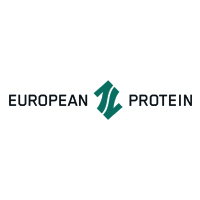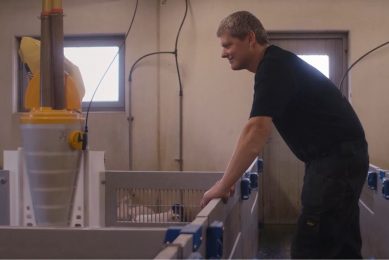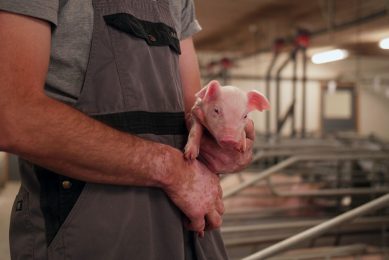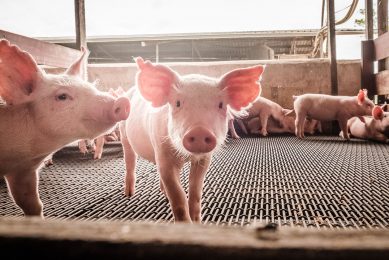Feeding strategy results in € 114 more per sow per year
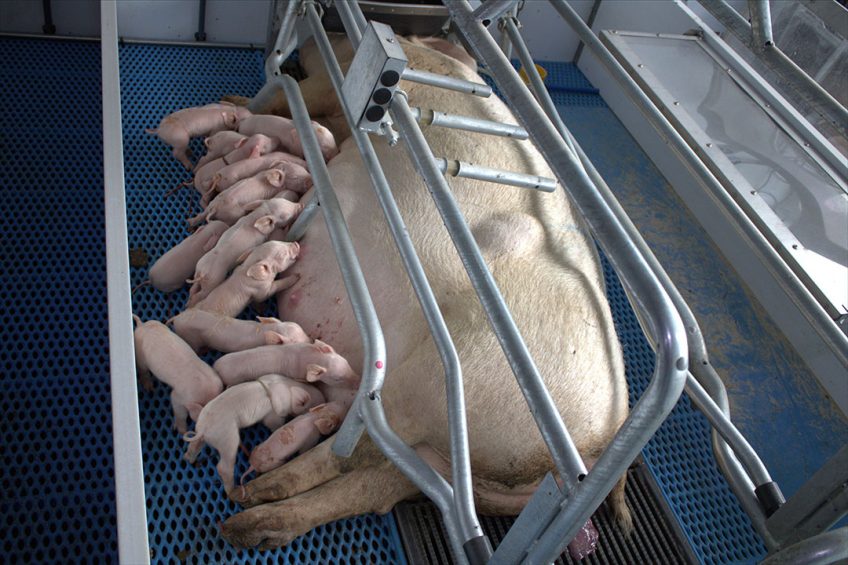
At Bankers Agro, owner Wilfred Bankers and his co-workers continuously search for new methods to increase productivity. The farm has 1,500 sows and produces 25-kilo piglets all fed with compound feed. The most recent feeding strategy resulted in an extra profit of € 114 per sow per year.
Though his numbers are in the top 10% of Dutch producers, owner Wilfred Bankers was eager and confident, that productivity could be further increased.
Needed to solve sow anorexia
His main problem was maintaining gut health in sows, and Bankers Agro experienced abrupt and full stops in feed intake in gestation and too many sudden deaths in sows’ Another item was continuous piglets diarrhoea during the first and sometimes the second week after farrowing creating losses and a lot of unplanned and extra work due to the treatment of the piglets.
New feed for sows and piglets
In November 2019, Wilfred Bankers, choose to try a new fermented protein EP199 for sows that would increase both sow productivity and reproduction. In his case, the producer European Protein promised to deliver more liveborn and vital and resilient piglets. To support piglet growth, Bankers Agro also included the fermented soy protein EP200 in the piglet feed.
In Holland, medicinal zinc (ZnO) has been banned since 2016, making the Dutch pig industry one of the world’s leading when it comes to raising piglets without growth promoters. Raising healthy piglets becomes critical, and Bankers Agro was already well-aware, that a healthy gut has a significant influence in determining piglet health and resilience.
Bankers Agro is using management and feed advice, as well as products from Swinco. When Swinco suggested trying a fermented rapeseed and seaweed product from European Protein, Bankers Agro accepted. 4% of the new fermented protein was included through the whole of the gestation period, before adding 9% as the sows move to the farrowing section.
Maybe too good to be true?
“We were very interested in trying out the product based on the presentation and data given, but we thought it might be too good to be true. Swinco told us not to use it in the farrowing section in the first two months. But I could see positive changes in gestation within two weeks. Better colour on the sows, better hair coat, fewer sows with anorexia. And then I thought: I want this in the farrowing house too, so we started using it in the farrowing section after three weeks, which I recommend other producers not to”, says farm manager Wilfred Bankers.
We have experienced more total and live-born piglets, but also more stillborn piglets. That is the only negative change we have, since we started feeding the new fermented protein, and we are currently testing solutions to overcome our problem with stillborn in collaboration with Swinco and European Protein.
Better condition of the sow
Shortly after including the feed in the gestation section, a few differences started to appear, says Wilfred: “Next to the improved visual appearance and better feed intake of the sows, improvements in the condition of the sows started to show. After about 2 months, we lowered the feeding scheme for all gestation with 200 grams per day, and the sows are still in better condition than before.”
Weaning over 2 piglets more per sow
The number of total born piglets went up by 3.6 per year per sow, and the number of liveborn piglets went up by 2.7 per sow per year through the first 3 months after feeding the gestating sows:
“The sows deliver more but also more vital piglets. We still want to decrease the number of stillborn piglets. It seems the sows sometimes push too hard, losing some of the piglets along the way. We have stopped using oxytocin to stimulate labour and contractions, as it is no longer needed, we sometimes even give them Stresnil to relax them instead of oxytocin.”
According to Bankers Agro, the liveborn piglets seem more vital than before, and the sows take better care of even larger litter sizes than before – she has weaned, on average, 14.7 piglets per litter already…
“We hardly need nursing sows, since we use the ‘big litter concept’ from Swinco. We want to keep it that way, so milk yield needs to be good. We help the sows by having milk cups from day 3 and onwards. After using the fermented protein the sows can take care of more piglets, and now wean 15.7 piglets per litter or 2.4 piglets a year extra.”

Less lactation feed needed
EP199 affects the amount of lactation feed as well, says Wilfred: “We have reduced the maximum amount of feed in the farrowing section twice, without a drop in milk yield or body condition, though they wean a piglet more per litter. First, we lowered it from 7 kilos to 6.4 kilos and then to 6.2 kilos; we plan to reduce it to 6 kilos now. We reduced the feed because the sows exit the farrowing section in too good of a condition, making timely and successful insemination more difficult.
And when it comes to the piglets, Bankers Agro saw a difference in the days after farrowing:
“We used to have problems with E.coli a few days after and sometimes also in the second week after farrowing. That is no longer an issue, and our mortality has dropped to 10,9%. Piglets from first litters still get diarrhoea occasionally but recover within a few days and without losses or lasting effect on the piglets. We expect it to decrease even further until diarrhoea is almost non-existing.”
Farrowing rate of 93%
The sows keep good body condition throughout lactation, which has improved the non-return and farrowing rates:
“We now have a farrowing rate of 93%, which is well above the average of the 10% best Dutch pig producers. It makes insemination much more effective and saves labour as we don’t have to re-inseminate as many as before EP199.”
Making more with less
The functional protein improves the guts’ ability to utilise feed, making more of the feed supplied.
In total, Bankers Agro saved 11% or 156 kilos of feed per sow per year and went from 1.412 to 1.255 kilos a year including the feed for the breeding gilts from 25 kg onwards. The sows wean 2.24 piglets per year more on much less feed and the amount of piglet feed per sold piglet reduced by 12.5%.
“We are still in the process of reducing sow feed, as they continue to keep good body condition,” say’s Wilfred Bankers.
More time for maintenance
The results go beyond productivity for sows as the employees have more time to do the job:
“The sows take better care of the piglets, keep more piglets alive, and fewer sows need to be re-inseminated. It means that we now have time half a day per week for maintenance and development ourselves, as we finish the tasks ahead of time.”
Gut health boosts the bottom line
The new fermented protein came at an extra cost compared to the traditional sow feed, while the piglet feed was just a bit more expensive for Bankers Agro.
In return, Bankers Agro got 2.24 more piglets weaned, reduced diarrhoea, and saved more than 11% of the amount of feed and a total of 3.5% of the feed cost.
Keeping other costs and the piglet sales price fixed, Bankers Agro now earns € 114 more per sow per year amounting to proximately € 170.000 more per year.
“After learning about our results, other Dutch farmers have asked us how we managed to get these results, several of them already decided to try it on their own farm as well.”
The new fermented protein
EP199 is a functional protein made from lacto-fermented rapeseed and seaweed. The protein is a single product containing multiple components focused on promoting animals’ health. It contains pre- and probiotics and most importantly, more than 1,000 different metabolites some of which have anti-bacterial and anti-inflammatory compounds. It is the combined effort of the compounds, that ensures a powerful and continues effect on sow health and productivity.
The protein supports a healthy gut through changes of the animals’ gut microbiome. Beneficial bacteria are promoted, and pathogens repressed increasing the nutrient utilisation, reducing inflammation, and most importantly providing more nutrients, antibodies, and a better microbiome to the developing foetuses and suckling piglets.
The feeding concept “The first 175 days”
European Protein has a holistic approach to healthier animals. Healthy animals start with a healthy mother and a healthy start on life.
The first 175 days refers to the collective period of insemination, gestation, and lactation up to 20-30-kilo piglet. During these 175 days, the piglet’s health-DNA is founded based on the health and better microbiome of their mother that also gives the piglets a better start in life.
At Europeanprotein.com you can find more information about where to buy EP199 and listen to other breeders and producers’ experiences with the fermented protein and the feeding concept ‘The first 175 days‘.


